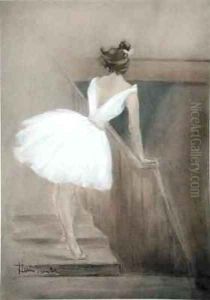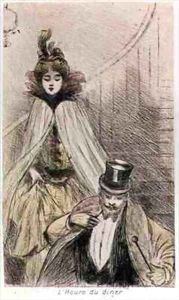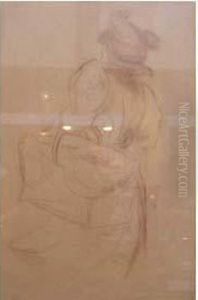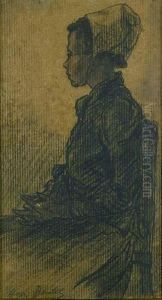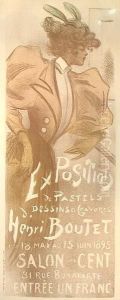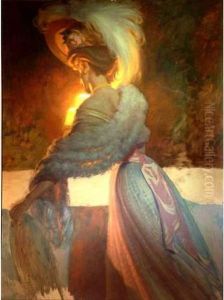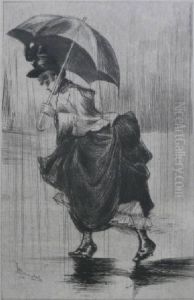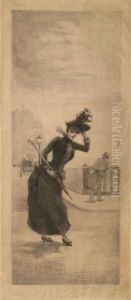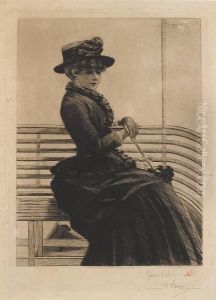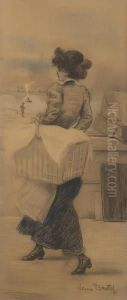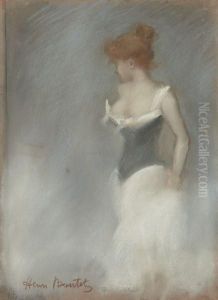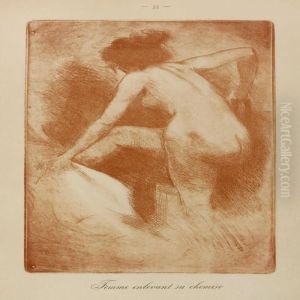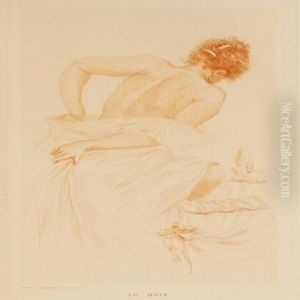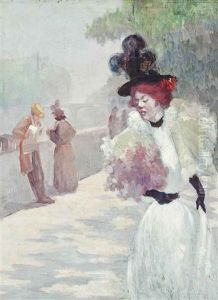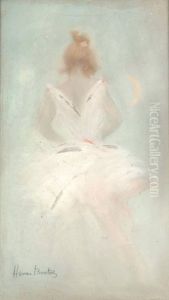Henri Boutet Paintings
Henri Boutet, born in 1851 in France, was a prominent figure in the realm of French illustration and printmaking during the late 19th and early 20th centuries. Known primarily for his delicate etchings and illustrations that often depicted elegant Parisian women, Boutet earned the nickname 'The Little Master of the Belle Époque'. His work is a reflection of the era's fascination with beauty, fashion, and the nuances of social interactions.
Boutet's artistic journey began in earnest when he moved to Paris, the epicenter of art and culture. There, he quickly became immersed in the vibrant artistic community, drawing inspiration from daily life in Paris as well as from fellow artists. Unlike many of his contemporaries who focused on grand historical or mythological themes, Boutet was more interested in capturing the essence of everyday life, particularly the grace and style of Parisian women. His subjects ranged from the demure to the coquettish, always with a focus on the fashionable attire of the time.
He was a master of etching, a technique that allowed him to achieve remarkable detail and subtlety in his works. Boutet's etchings often featured intricate patterns and fine lines, showcasing his exceptional skill and patience. Beyond etchings, he also worked with drypoint and engraving, techniques that added depth and texture to his illustrations. His works were widely popular, not just in France but across Europe, and they were often featured in magazines, journals, and as standalone pieces collected by art enthusiasts.
Despite his success, Henri Boutet remained relatively modest about his achievements. He was prolific throughout his career, contributing significantly to the art world until his death in 1919. Today, Boutet's work is celebrated for its elegance and precision, offering insight into the fashion and culture of the Belle Époque. His legacy lives on in museums and collections around the world, where his pieces continue to be admired for their beauty and historical value.
